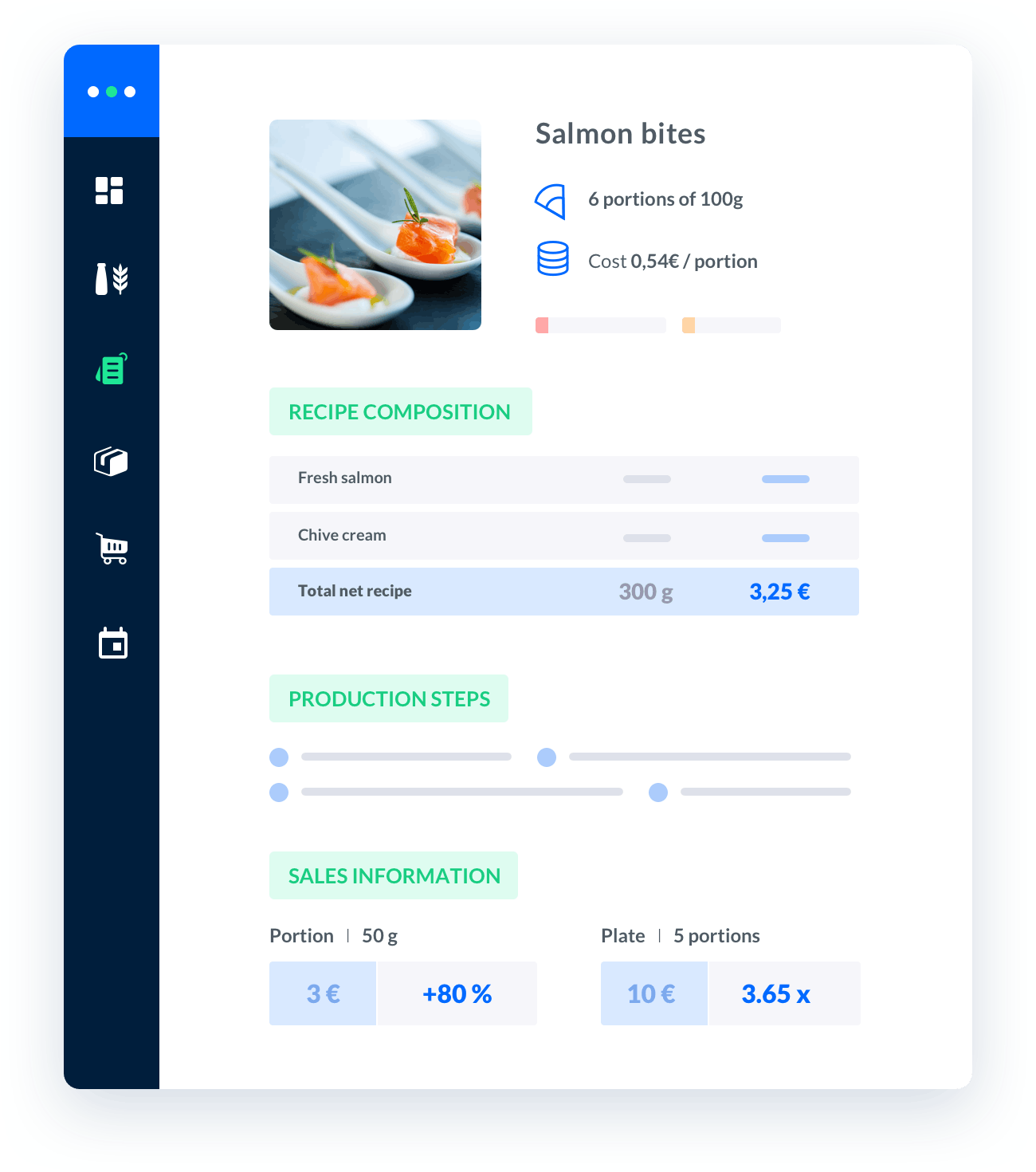food cost inventory spreadsheet free
"When it comes to managing food costs in the catering industry, having an efficient inventory system is crucial.One of the most effective ways to track and control food costs is by using a food cost inventory spreadsheet.

Melba: the food cost app to optimize the profitability of your restaurant
Discover how to optimize the profitability of your restaurant with melba

The ultimate guide to food cost restaurant
Learn more about the food cost basis and how to reduce your food cost percentage
When it comes to managing food costs in the catering industry, having an efficient inventory system is crucial. One of the most effective ways to track and control food costs is by using a food cost inventory spreadsheet. In this article, we will explore the benefits of using a food cost inventory spreadsheet and provide you with some free options to get started.
The Importance of Tracking Food Costs
Tracking food costs is essential for any catering business. Not only does it allow you to monitor your expenses and ensure that you stay within budget, but it also helps you identify areas where you can cut costs and improve profitability. By accurately tracking your food costs, you can make informed decisions on pricing, menu planning, and purchasing.
1. Accurate Inventory Management
Using a food cost inventory spreadsheet enables you to maintain an accurate record of your inventory levels. This allows you to easily track the quantity and value of each ingredient in stock, ensuring that you are aware of what you have on hand at all times. By having a clear picture of your inventory, you can minimize waste, avoid overstocking, and prevent stockouts.
2. Cost Control and Analysis
A food cost inventory spreadsheet allows you to calculate the cost of each dish or menu item by factoring in the cost of ingredients used. By regularly analyzing these costs, you can identify any discrepancies or trends that may be affecting your bottom line. This insight enables you to make adjustments to your recipes, portion sizes, or ingredient sourcing to optimize your food costs.
3. Menu Planning and Pricing
With a food cost inventory spreadsheet, you can determine the profitability of each menu item based on its ingredient costs. This information is invaluable when it comes to menu planning and pricing. By understanding the cost and profitability of your dishes, you can make informed decisions on which items to feature, adjust prices accordingly, and ensure that your menu is both enticing to customers and profitable for your business.
Free Food Cost Inventory Spreadsheets
Now that you understand the importance of using a food cost inventory spreadsheet, let's explore some free options to help you get started:
1. Google Sheets
Google Sheets is a free online spreadsheet tool offered by Google. It provides all the essential features required for food cost inventory management, including calculations, data filtering, and collaboration options. With Google Sheets, you can easily create and customize your own food cost inventory spreadsheet to suit your specific needs.
2. Microsoft Excel Templates
Microsoft Excel offers a range of free food cost inventory spreadsheet templates that you can download and use. These templates are pre-designed with formulas and formatting, making it easier for you to track and analyze your food costs. Simply search for ""food cost inventory spreadsheet templates"" on the Microsoft Office website to find the options available.
Best Practices for Using a Food Cost Inventory Spreadsheet
When using a food cost inventory spreadsheet, it's important to follow some best practices to ensure its effectiveness:
1. Regular Updates
Ensure that you update your food cost inventory spreadsheet regularly to reflect any changes in inventory levels, ingredient costs, or menu items. This will ensure that your data remains accurate and up-to-date.
2. Categorize Ingredients
Organize your ingredients into categories or groups to make it easier to analyze and track their costs. This can be done by grouping ingredients based on their type (e.g., proteins, vegetables, grains) or by the menu items they are associated with.
3. Use Real-Time Data
If possible, integrate your food cost inventory spreadsheet with your point-of-sale system or procurement software to automatically update ingredient costs and quantities. This will save you time and ensure that your data is always current.
In conclusion, using a food cost inventory spreadsheet is a valuable tool for managing food costs in the catering industry. It allows you to accurately track inventory, control costs, plan menus, and make informed pricing decisions. By utilizing free options such as Google Sheets or Microsoft Excel templates, you can easily implement an effective food cost inventory system for your business. Remember to follow best practices and regularly update your spreadsheet to maximize its benefits.
"





